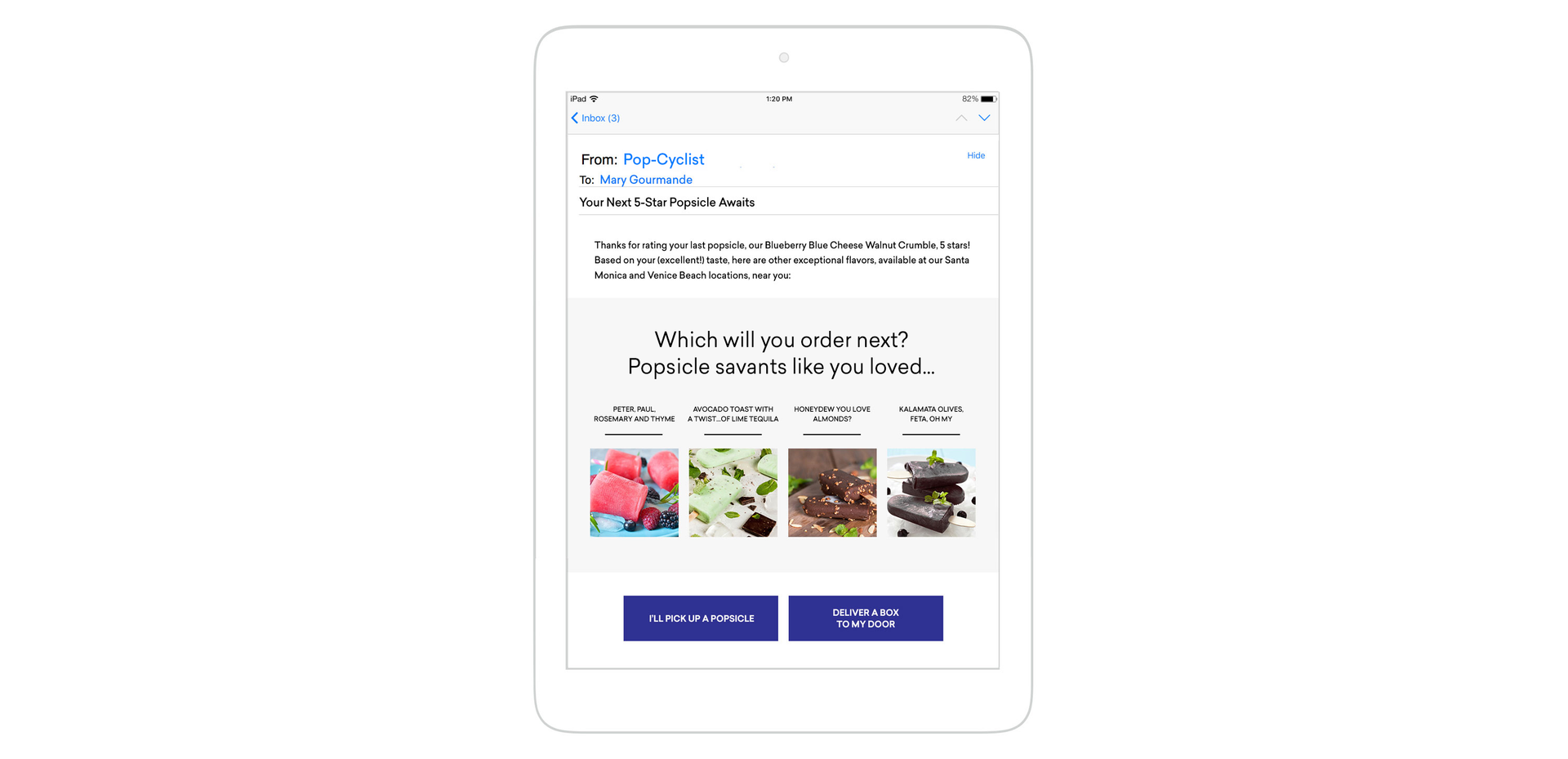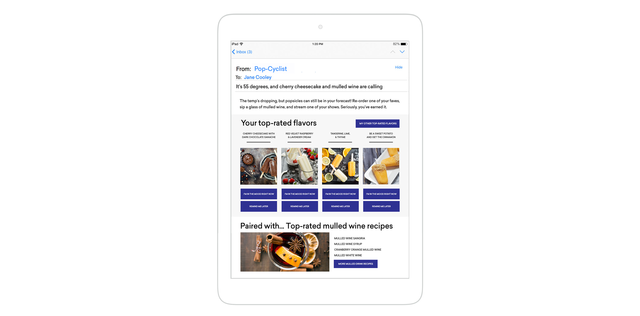5 Pillars of a Modern Email Marketing Strategy
Published on June 04, 2018/Last edited on June 04, 2018/4 min read


Mary Kearl
WriterImagine you work for one of those artisanal popsicle places with the always changing, always in-demand bespoke—yes, bespoke—flavors of the week. You’re not in testing (i.e. tasting) and you’re not in R&D, concocting combos like fennel carob cake and beet-juice-infused kale pesto, you’re on the corporate side as an email marketing guru. But your job is not the consolation prize, you are the secret weapon making sure your trendsetting company shines.
Although email sounds like something millennials should have killed (and, if you believe clickbait headlines, they’ve been busy destroying lots of classics), it’s actually the best channel for reaching millennials, and the one with the highest ROI, according to Harvard Business Review.
But like any R&D team, email marketers are at their best when innovating leaps and bounds ahead of the competition. Today’s modern email marketing strategy, centered on growth and engagement, is fueled by message personalization, dynamic content, savvy use of exception events, send-time optimization, and more. Let’s walk through how our unsung popsicle email marketing champion can pull each element together to create campaigns that drive flavor-crazed fans to open, read, click, engage, eat, and repeat.
1. Message Personalization
You’ve likely nailed down the basics of personalization, like including your customer’s first name in the email, and perhaps including some account information, but that’s just the beginning.
- Customer attributes — as with all elements of personalization, this is only as good as the data you collect, but if you’re keeping tabs, you can pull in the following and more:
- Events, such as
- Purchase history
- Abandoned shopping cart history
- Ratings, favoriting, sharing
- Brand engagements
- Age
- Gender
- Favorite____ (you name it)
- Events, such as
- Customer attributes — as with all elements of personalization, this is only as good as the data you collect, but if you’re keeping tabs, you can pull in the following and more:
- Language — Words matter, and, specifically what language they’re in: 55% of people only buy if they receive messages in their native language
- Delivery time — The time of day and day of week can impact everything from open rate to ecommerce conversions
- Location — There’s a reason “Location, location, location” is such a popular saying, and it applies in email marketing too
- Location-targeting: Target uses based on last known locale
- Location-data enrichment: Go beyond ZIP codes, know where they like to go, such as work-out hangs, post-work happy hours, places to relax, and so forth to message your customers in unique ways
- Geofencing: If they enter a defined location, such as within a certain radius of your brick and mortar locations, you can trigger custom messaging
- Beacons: This is an even finer line than geofencing, ideal for in-store situations, like when customers are a few centimeters away from your newest popsicle offering.
2. Dynamic Content
With dynamic content, also known as Connected Content, take personalization to the next level to make a potent impact in the form of an expected 27% increase in conversions. Instead of being the company that knows your customers by first name, you can be the business that knows what they’ll like next before they even know, leveraging these powerful capabilities below.
- Recommendation engine — pull in suggested next purchases based on individual and aggregate customer data

- Localized weather — Weather has an immediate impact on your customers and it affects their daily routines, and now you can show you care about it, too, in real-time
- Data from public APIs — Could outside content pair nicely with your ecommerce or engagement campaign? Now you can add it in, seamlessly
For example, Jane’s email below pulls in weather and recommended recipes available from public recipe APIs.

3. Frequency Capping
Over-messaging or messaging at the wrong times can be just as damaging as sending cookie-cutter, one-size-fits-all email marketing campaigns. This is where frequency capping comes in. The key to not over doing it? Set message caps so no one receives more than X number of messages during a single day or week—whatever seems works best for your users.
Advice on avoiding unsubscribes from Braze Director of Email Deliverability Andrew Barrett
4. Send-Time Optimization
Thanks to advances in AI for marketers, you can go beyond “What’s the best time to send an email in general?” to “What’s the best time to send an email to each specific user?”
5. Cross-Channel Messaging
So now that we’re on the same page about email’s potency, let’s also agree that it’s never a good idea to put all your popsicle in one basket. Email is powerful alone, but, like popsicle multipack, it goes even better with other flavors. Our research shows that pairing email with other channels, such as push notifications or in-app messages, as part of a cross-channel marketing approach, can boost engagement by more than 300%. So don’t stop with email, consider these four main customer messaging channels in your mix, too.
What can you do next?
For a deeper dive into the modern email marketing playbook, check out our new Email Marketing Guide.
Related Tags
Releated Content
View the Blog
The new inbox reality: How iOS changes are reshaping email marketing

Aparna Prasad

Experience optimization: Turning data insights into better journeys

Team Braze

December 2025 Bonfire Marketer of the Month: Jagex’s Emma Oliver
